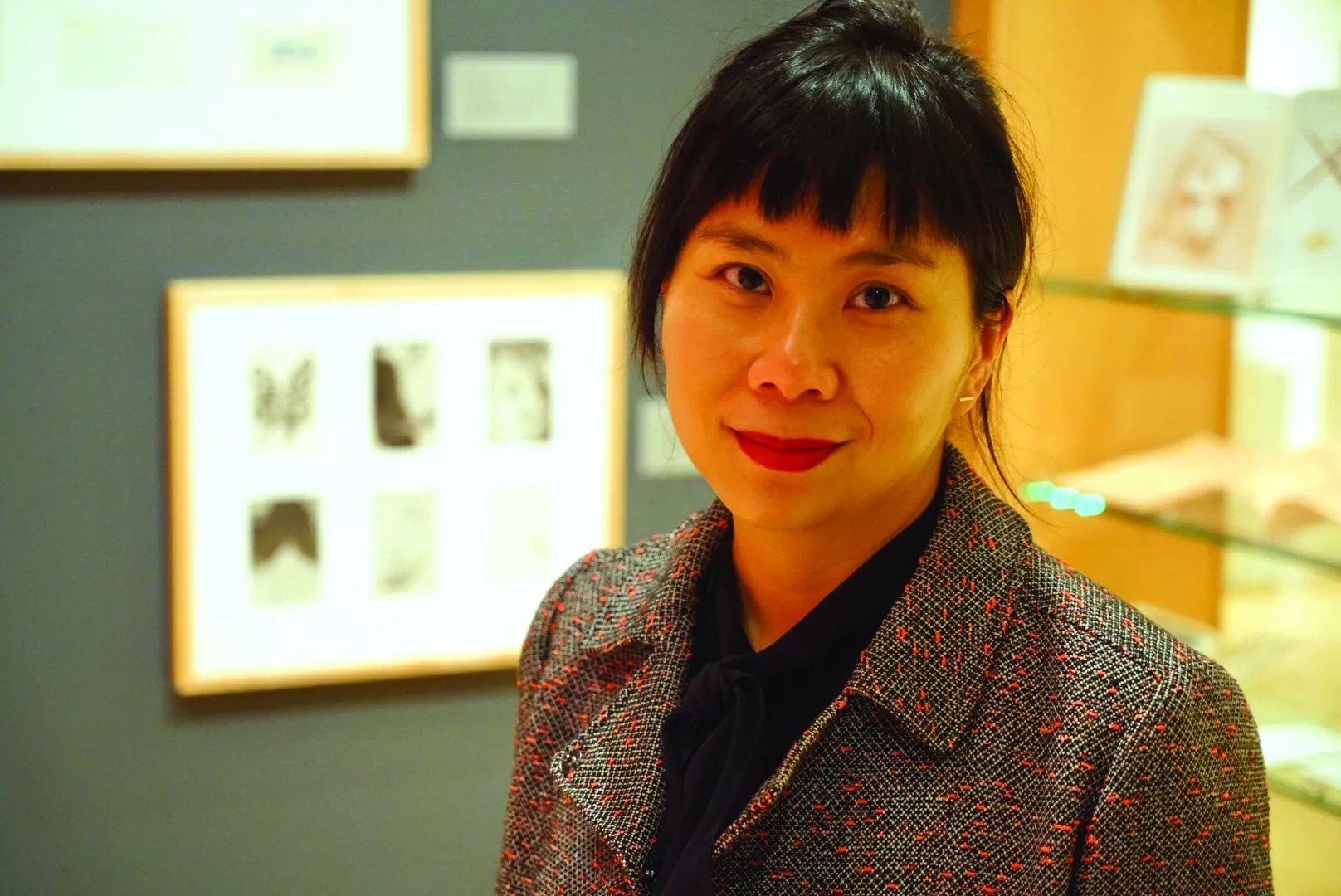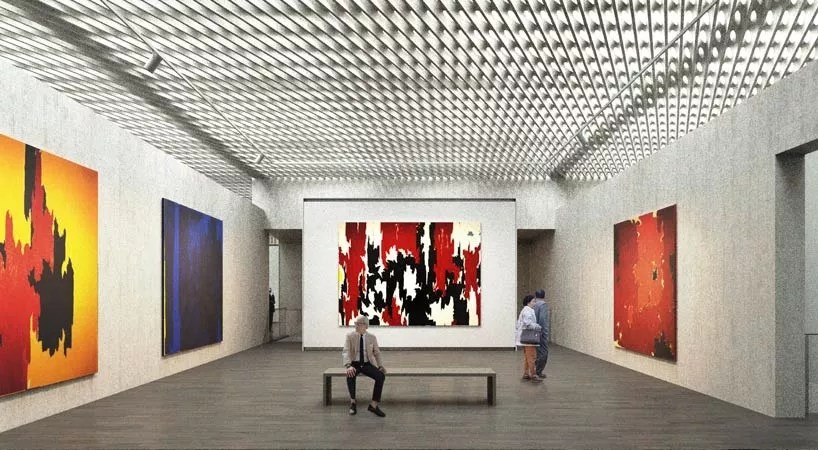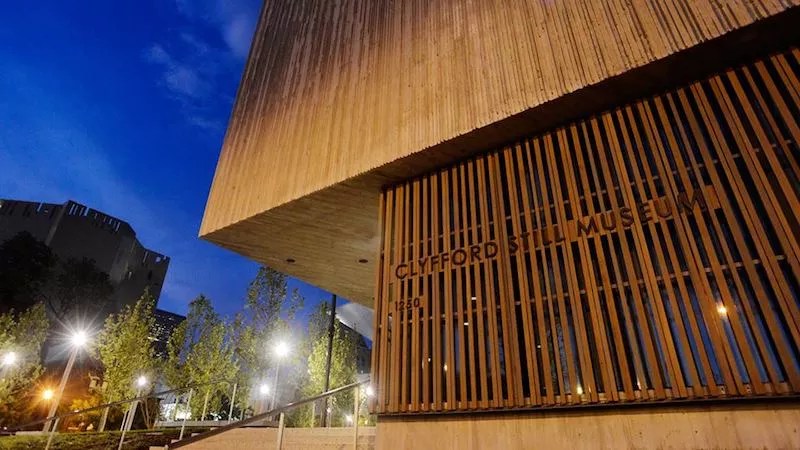
Mei-Ling Shaw

Audio By Carbonatix
Weeks into her new job as executive director of the Clyfford Still Museum, art historian and curator Joyce Tsai continues to be impressed by what she describes as the institution’s “culture of care” – which links back to how the celebrated abstract expressionist approached his gargantuan canvases, focusing on details of gesture, color and the edges of the frame.
She admires the care that the artist’s wife, Patricia Still, put into ensuring that his work was maintained in a singular institution, as he requested in a 1978 letter: “I give and bequeath all the remaining works of art executed by me in my collection to an American city that will agree to build or assign and maintain permanent quarters exclusively for these works of art and assure their physical survival with the explicit requirement that none of these works of art will be sold, given, or exchanged but are to be retained in the place described above exclusively assigned to them in perpetuity for exhibition and study.”
And Tsai praises the care that city power brokers – first Mayor Wellington Webb and later Mayor John Hickenlooper – displayed in persuading Patricia to allow Denver to bring Still’s works to town and risk opening a single-artist museum that would display 95 percent of what he created. And none of it would have been possible, she notes, without the care of taxpayers who support the Scientific and Cultural Facilities District, as well as foundations and philanthropists.
The culture of care is also reflected in the building itself: 28,500 square feet of quartz, crushed granite and concrete, designed by Brad Cleopfil of Allied Works Architecture. The spacious galleries and natural lighting make appreciating and scrutinizing Still’s works a comfortable experience, she says, one where viewers are free to express their emotional connections with the art.
This year, make your gift count –
Invest in local news that matters.
Our work is funded by readers like you who make voluntary gifts because they value our work and want to see it continue. Make a contribution today to help us reach our $50,000 goal!
She points to the care taken in the conservationists’ laboratory, where they study the fat in oil paint and how it morphs over time, influencing the way they preserve Still’s 3,125 paintings made between 1920 and 1980. The art began arriving in Denver more than a decade ago, rolled up in massive cardboard tubes, only to be taken out, stretched on frames and restored to its former glory. The museum opened in November 2011, and a decade later, that initial preservation endeavor is finally coming to an end, even as the museum continues to ensure that Still’s paintings – many of which have exposed canvases and are fragile despite their imposing size – do not deteriorate.
Tsai sees more care as she looks through the nine galleries, absorbing the art and the way in which the curatorial staff puts the ever-rotating pieces in fresh contexts.

Social distancing has often been the norm at the Clyfford Still Museum, though mask-wearing is now required.
Leanne Goebel
She celebrates the museum’s community outreach and educational programs that make young people feel like the institution is their space, one they can comfortably move through as they explore the limits of artistic expression pushed by Still. In spring 2022, the museum will even mount an exhibition of Still’s paintings curated in collaboration with children.
Most of all, Tsai is grateful for the care of the staff, whom she describes as “the beating heart of this institution,” and their willingness to welcome her not just in words, but in action, even before she arrived in Denver from Iowa City, where she served as the chief curator of the University of Iowa’s Stanley Museum of Art and associate professor in the School of Art and Art History. Transitions can be awkward, but everyone has made her move smooth.
“There was a welcoming sunshine squad that made me a box with everybody’s pictures on them, color-coded by department, with hobbies and a description of what they do, in advance of my arrival. It really allowed me to kind of get a sense of people’s personalities before getting here, and it just made the transition all the smoother,” Tsai says. “It also gave me a chance to just be consistently impressed by the work that they do in building this institution.”
Taking on a new leadership role in an unfamiliar city might be stressful, but Tsai’s introduction to the museum, its staff, and Denver itself has been surprisingly relaxed.
“I can’t imagine a better position to be in right now,” she says.
Tsai is the second director of the Clyfford Still Museum, following in the footsteps of founding director Dean Sobel, a treasured figure on the local art scene who empowered his employees to turn a single artist’s collection into a must-visit cultural destination. The museum, which could easily have been a frumpy monument to mid-century genius, obsessed with one more deified dead white man, has proven itself to be not just a smart steward of Still’s work, but a booster of broader culture.
Over the years, the museum has booked an impressive concert series with touring musicians like Red Baraat, Jayme Stone and the Spektral Quartet. Over the summer, the outdoor walls have displayed experimental media art programmed by nomadic microcinema Collective Misnomer, one of Denver’s finest curatorial projects, which had struggled to gain traction with the art establishment until now. Finding ways to create space for understanding tough-to-access art is one of the museum’s goals.
Still himself is the kind of artist whose abstract works demand that viewers take time, pay attention and allow themselves the freedom to feel and think. The swaths of paint on canvas offer a rich experience – but because the work appears challengingly simple, it also warrants skepticism. Are artists like Still trying to con viewers? Are the paintings pointless? Couldn’t a child do them?
“I see all skeptics as people waiting to be persuaded,” Tsai explains. “And people are skeptical for all sorts of reasons that are absolutely legitimate. So it’s really my job to understand the source of their skepticism.” Much skepticism, she notes, has a basis in class: “There’s a kind of sense that culture is for the elites. And that didn’t come from nowhere.”

Clyfford Still Museum
Tsai’s background gives her empathy with viewers who might dismiss abstraction.
“I didn’t come from an art family,” she explains. “I was born in Taipei. I came to this country when I was seven.” Her family moved to Rolla, Missouri; she didn’t know English, and there was no ESL program to teach her the language. “So that accent…I got rid of that accent really quick,” she recalls. “I had always been interested in art, but it was not like my parents encouraged me to study art. I’m the daughter of immigrants. They wanted something more pragmatic, and I completely understand that.”
They hoped she’d be a lawyer, so she studied history in college. Then she received a Fulbright scholarship and traveled to Berlin, where she studied philosophy and contemporary art. Eventually, she earned a Ph.D. and became a professor of art history.
Her own history adds to her ability to talk about the merits – and issues – of Still’s works and life with people from many backgrounds.
She views the museum’s role, in part, as an instigator of deep conversations, where visitors have a chance to dig into their skepticism, challenge their own preconceived notions and find unity – not necessarily agreement – in debate.
“What I do want to do is to make the argument for this museum,” Tsai says. “This collection and this institution are holding out the promise of knitting us together closer – not because we are forced to agree, but because we are moved to persuade. And because we are moved to try to get closer to why somebody reacts one way or another to a work of art or to an institution.”
As for her own curatorial vision, she hopes to destabilize the myth of the individual artist as genius and demonstrate how great art is born from communities.
“The success of these paintings is indebted to a complex network of people who are not all the same,” Tsai says. “There are men, women, immigrants, people from different faith backgrounds. All of that matters, you know, in the network that they build, the support they lend, the competition that also arises.
A single-artist museum allows us to actually dig in deeper, to find ways of exploring those networks, those relationships, but also find new ways moving forward to create networks of support that reflect the values that we share.”
And move forward together.
“I’m not doing this alone,” Tsai concludes. “I’m building on an incredibly strong foundation where those values and relationships are already manifest.”
For more information visit the Clyfford Still Museum online or in person at 1250 Bannock Street.